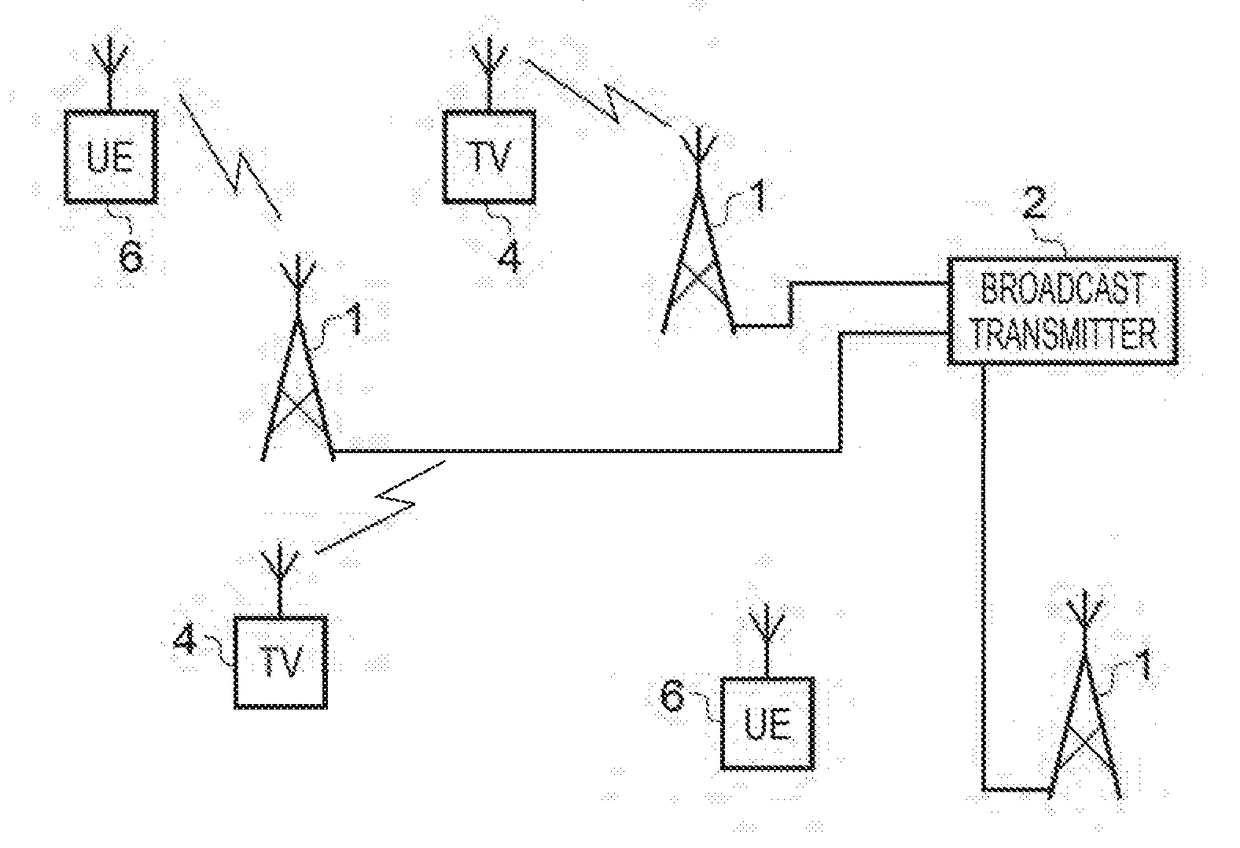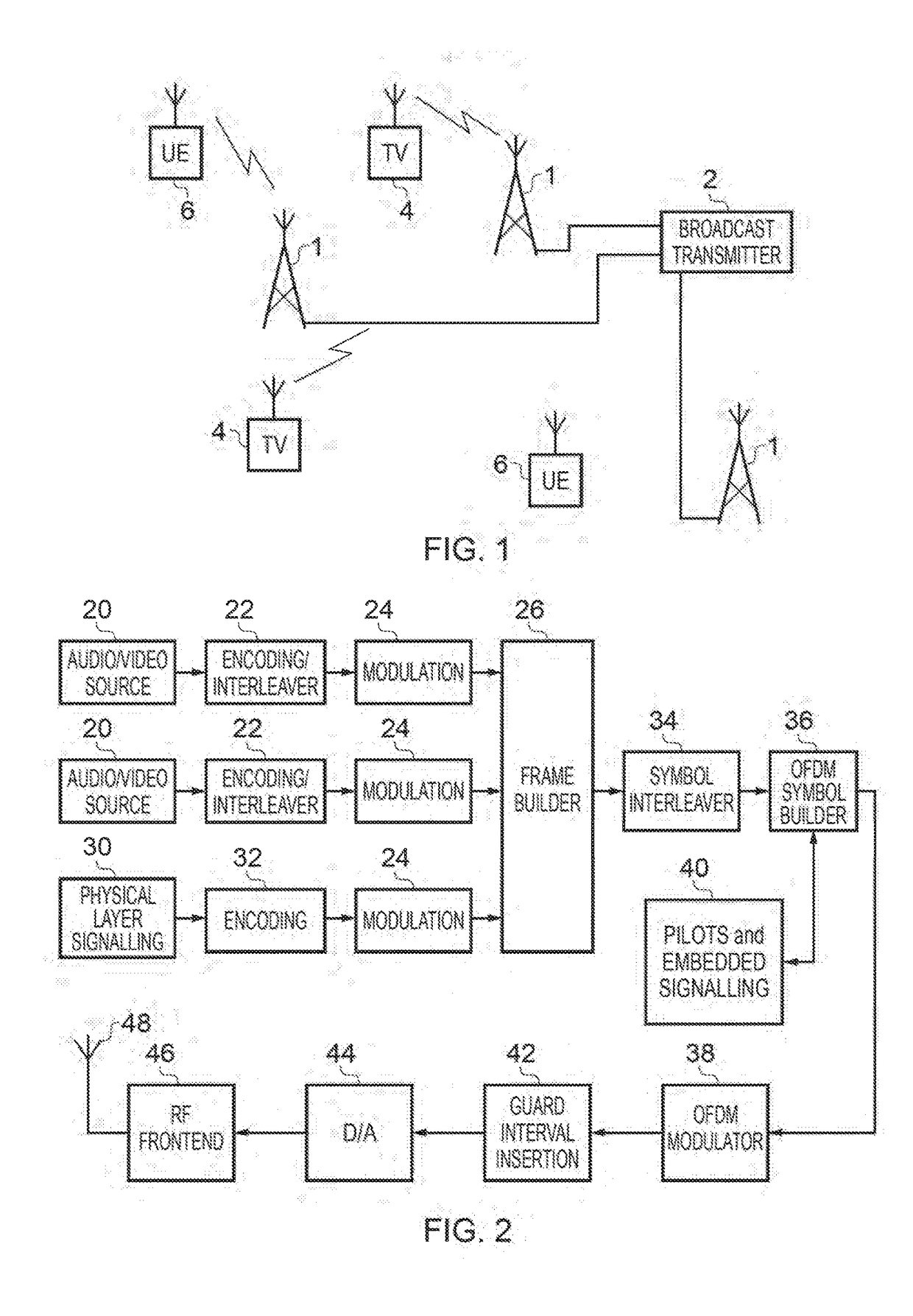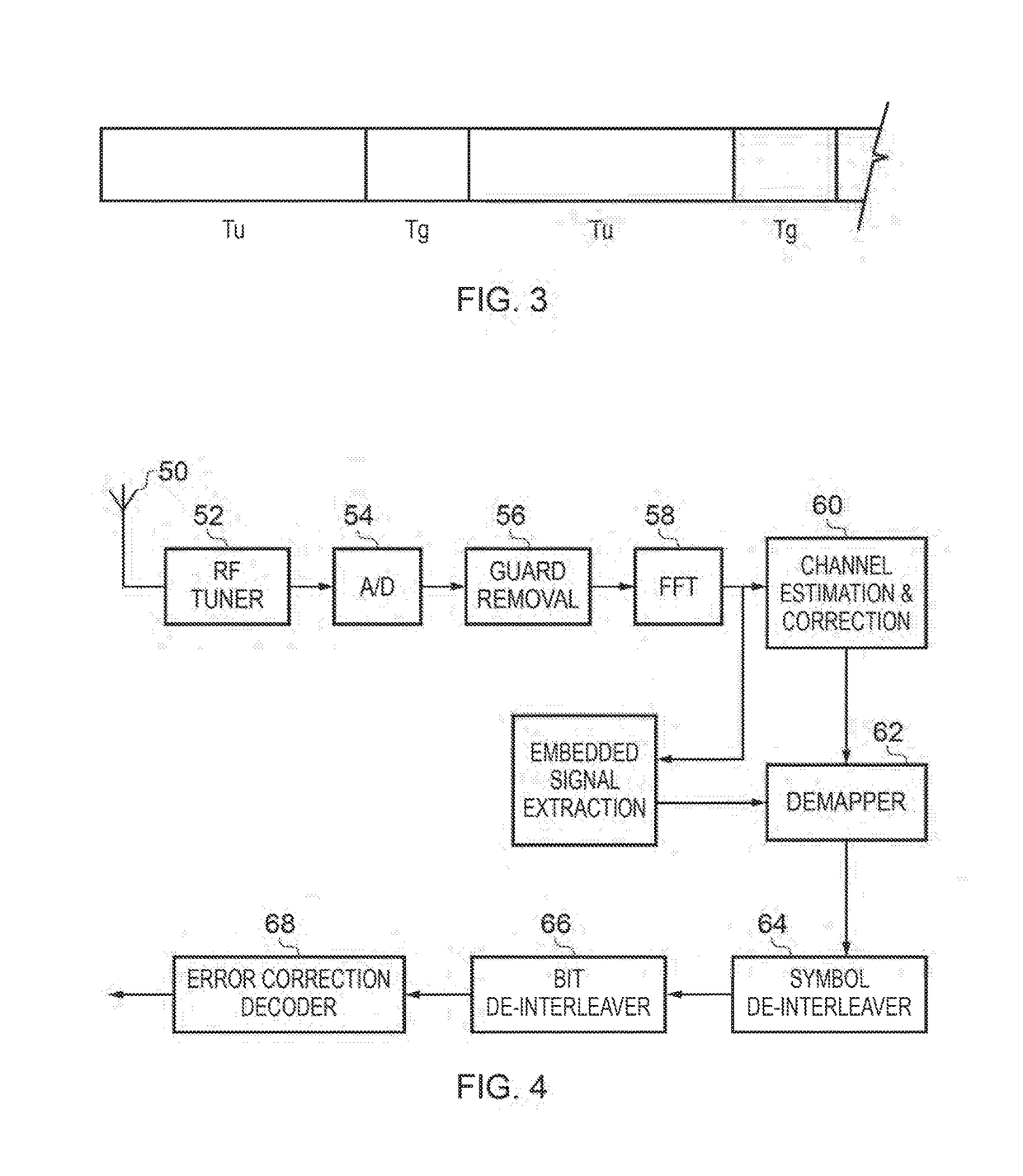Transmitter and method of transmitting and receiver and method of detecting OFDM signals
a technology of transmitting and receiving methods and receivers, applied in the direction of transmission path division, multi-frequency code systems, transmission path sub-channel allocation, etc., can solve the problems of reducing the robustness of each receiver, the bandwidth of each and the receiver is more difficult to recover data. , to achieve the effect of more robust communication systems
- Summary
- Abstract
- Description
- Claims
- Application Information
AI Technical Summary
Benefits of technology
Problems solved by technology
Method used
Image
Examples
Embodiment Construction
[0031]Embodiments of the present disclosure can be arranged to form a transmission network for transmitting signals representing data including video data and audio data so that the transmission network can, for example, form a broadcast network for transmitting television signals to television receiving devices. In some examples the devices for receiving the audio / video of the television signals may be mobile devices in which the television signals are received while on the move. In other examples the audio / video data may be received by conventional television receivers which may be stationary and may be connected to a fixed antenna or antennas.
[0032]Television receivers may or may not include an integrated display for television images and may be recorder devices including multiple tuners and demodulators. The antenna(s) may be inbuilt to television receiver devices. The connected or inbuilt antenna(s) may be used to facilitate reception of different signals as well as television ...
PUM
 Login to View More
Login to View More Abstract
Description
Claims
Application Information
 Login to View More
Login to View More - R&D
- Intellectual Property
- Life Sciences
- Materials
- Tech Scout
- Unparalleled Data Quality
- Higher Quality Content
- 60% Fewer Hallucinations
Browse by: Latest US Patents, China's latest patents, Technical Efficacy Thesaurus, Application Domain, Technology Topic, Popular Technical Reports.
© 2025 PatSnap. All rights reserved.Legal|Privacy policy|Modern Slavery Act Transparency Statement|Sitemap|About US| Contact US: help@patsnap.com



